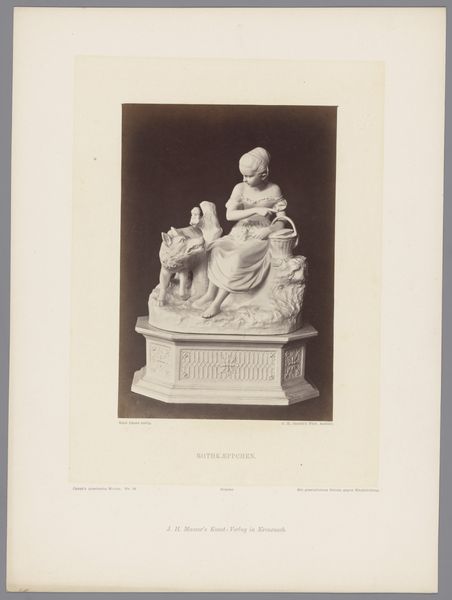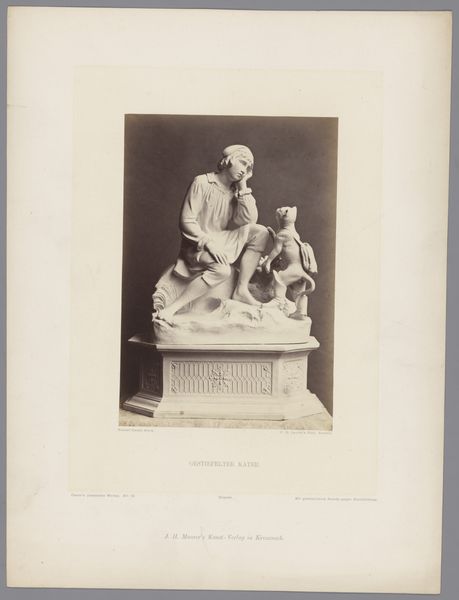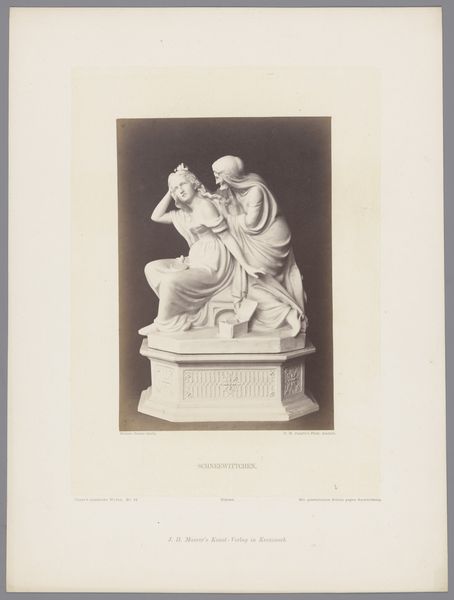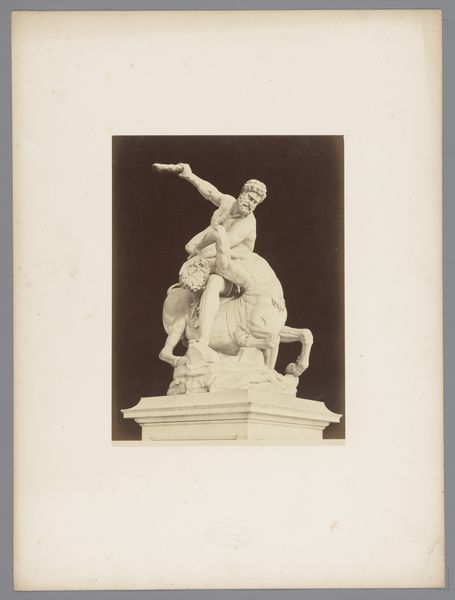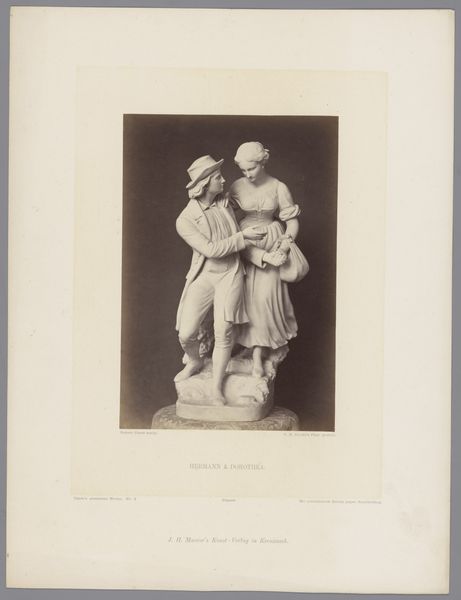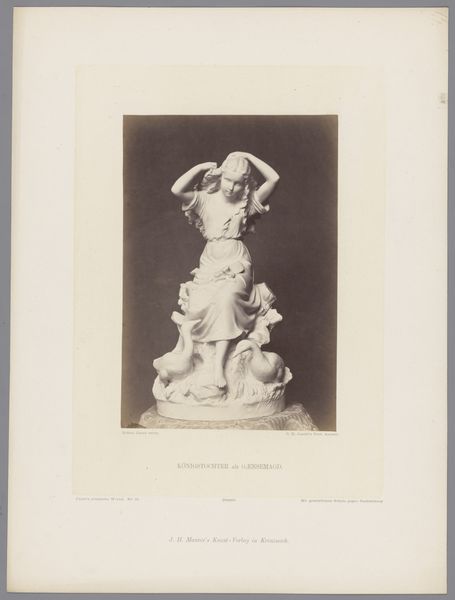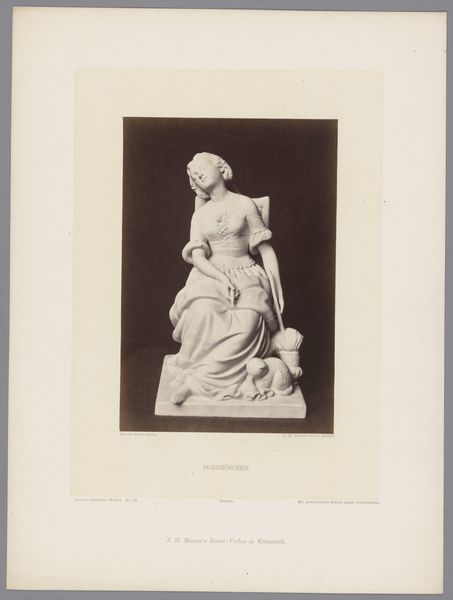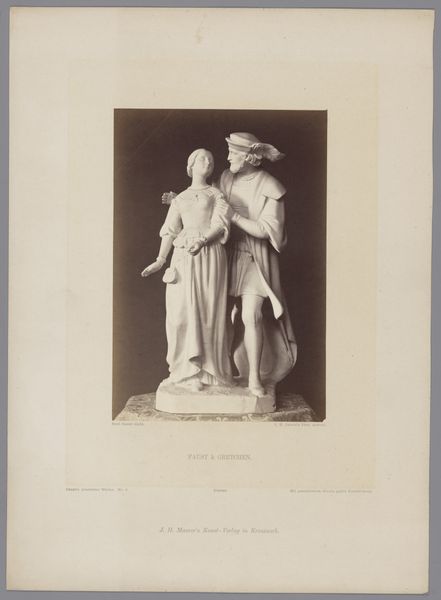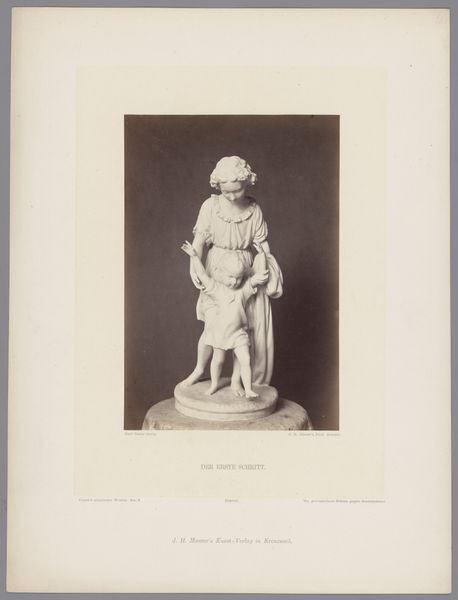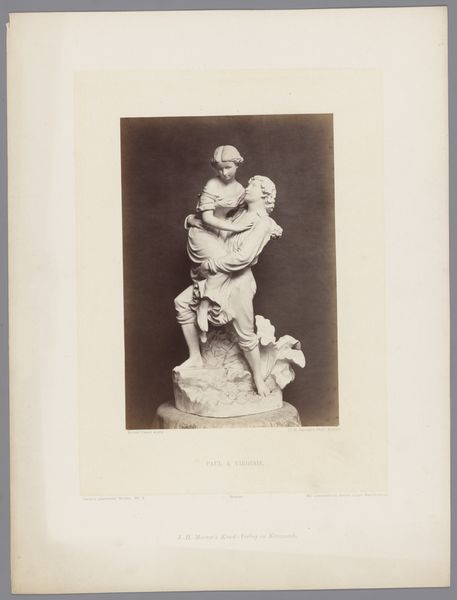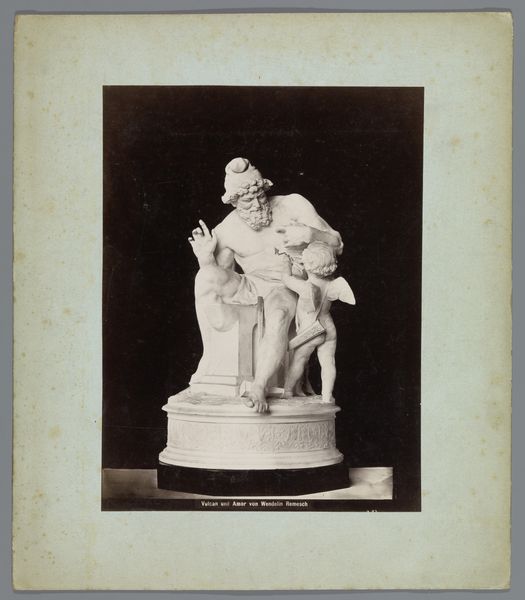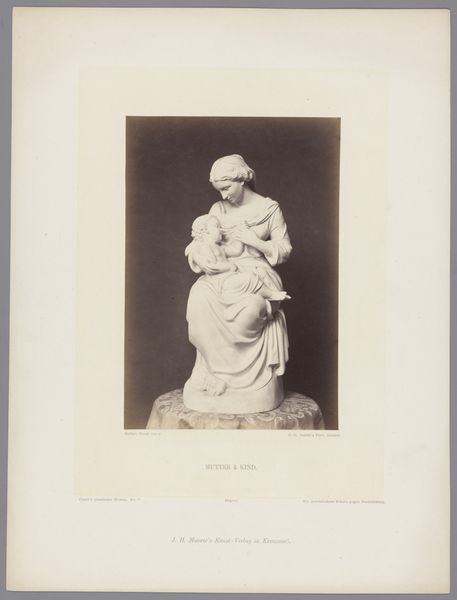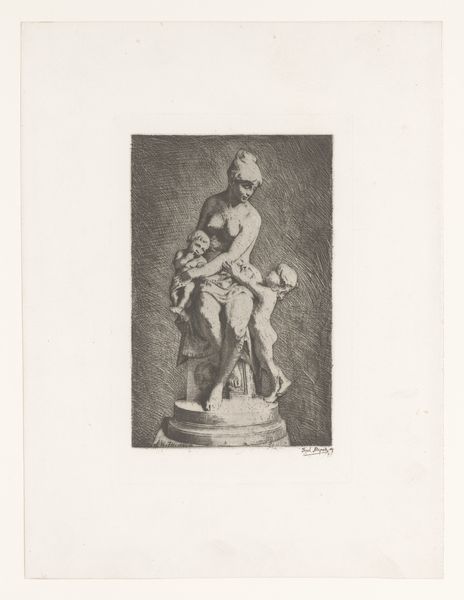
Dimensions: height 348 mm, width 266 mm
Copyright: Rijks Museum: Open Domain
Curator: Here we have a photographic rendering of "Hansel and Gretel," a sculpture attributed to Robert Cauer, dating roughly between 1850 and 1900. Editor: It has a somewhat melancholic stillness. The children's figures, so pale against the dark backdrop, are undeniably sweet but almost burdened by their shared vulnerability. Curator: Absolutely. The way Cauer, or rather, the sculptor—as we're examining a photo of it—has captured them is quite telling. Neoclassical idealism would likely demand an idealized portrayal. The choice of bronze for the original, then later rendered through photography, lends itself to considerations about the commodification and dissemination of art in the 19th century. Editor: Yes, that translation from sculpture to photograph is interesting. Still, it evokes the fairy tale, doesn't it? The almost saccharine, slightly gothic rendering amplifies the story's psychological core. Their posture is so human, recalling a shared experience, evoking tenderness and perhaps their fear. Curator: Fear that's intimately connected to economics and access. Children cast adrift due to material need. The smooth finish, a direct consequence of its crafting process, ironically masks a story about privation. Think of all that labour implied by its manufacturing, from the bronze workers to the photographer and printer. Editor: The iconography, however, resonates deeply. Children lost in the woods represent something primal, our anxieties about abandonment, protection, and innocence threatened by forces beyond control. Gretel's pose leaning onto Hansel, the comfort, it is heart-wrenching, laden with the weight of our anxieties. Curator: Anxiety rooted in real material conditions, undoubtedly. Consider how the proliferation of images, like this photo, made art, and subsequently these anxieties, accessible to broader audiences. But were they invited to consider the economic realities inherent in its production? Or did they focus just on aesthetic ideals? Editor: I suppose the image holds up a mirror to both our individual fears and collective cultural memory. And you’re making a crucial point in tracing all of these artworks to the cultural and historical labor that make this accessible to us. Curator: Precisely. Seeing the layers of artistic creation reveals our assumptions about art and the economy in unexpected ways. Editor: Looking at this sculpture photo I’m going away pondering those layers of meanings that art conveys—it's always about multiple interpretations and cultural context, isn't it?
Comments
No comments
Be the first to comment and join the conversation on the ultimate creative platform.
